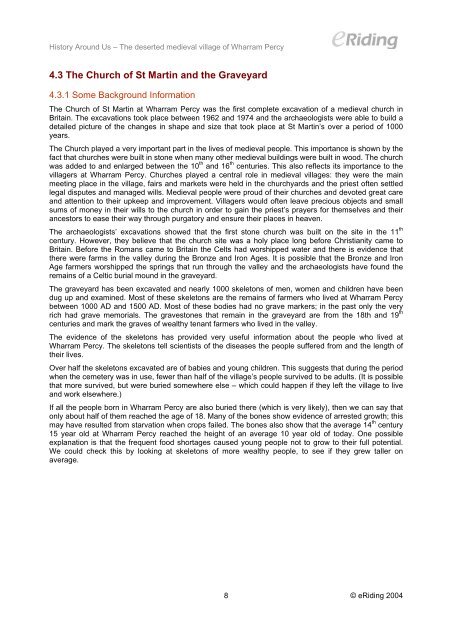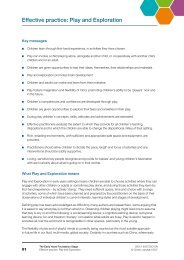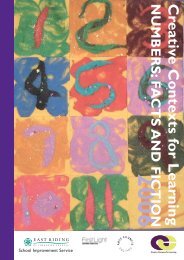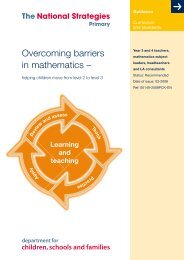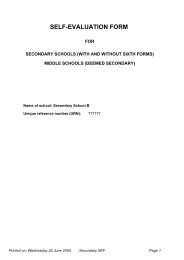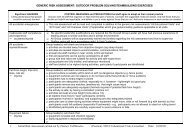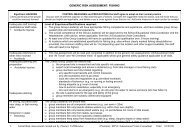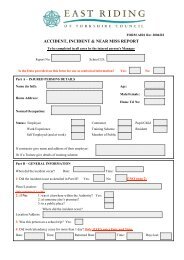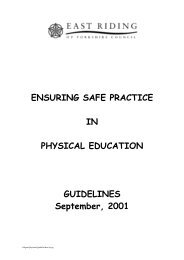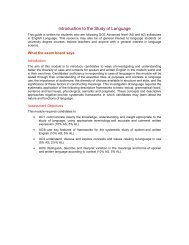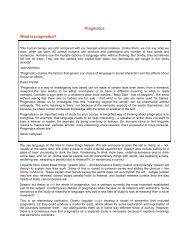GCSE Coursework: History Around Us - eRiding
GCSE Coursework: History Around Us - eRiding
GCSE Coursework: History Around Us - eRiding
Create successful ePaper yourself
Turn your PDF publications into a flip-book with our unique Google optimized e-Paper software.
<strong>History</strong> <strong>Around</strong> <strong>Us</strong> – The deserted medieval village of Wharram Percy4.3 The Church of St Martin and the Graveyard4.3.1 Some Background InformationThe Church of St Martin at Wharram Percy was the first complete excavation of a medieval church inBritain. The excavations took place between 1962 and 1974 and the archaeologists were able to build adetailed picture of the changes in shape and size that took place at St Martin’s over a period of 1000years.The Church played a very important part in the lives of medieval people. This importance is shown by thefact that churches were built in stone when many other medieval buildings were built in wood. The churchwas added to and enlarged between the 10 th and 16 th centuries. This also reflects its importance to thevillagers at Wharram Percy. Churches played a central role in medieval villages: they were the mainmeeting place in the village, fairs and markets were held in the churchyards and the priest often settledlegal disputes and managed wills. Medieval people were proud of their churches and devoted great careand attention to their upkeep and improvement. Villagers would often leave precious objects and smallsums of money in their wills to the church in order to gain the priest’s prayers for themselves and theirancestors to ease their way through purgatory and ensure their places in heaven.The archaeologists’ excavations showed that the first stone church was built on the site in the 11 thcentury. However, they believe that the church site was a holy place long before Christianity came toBritain. Before the Romans came to Britain the Celts had worshipped water and there is evidence thatthere were farms in the valley during the Bronze and Iron Ages. It is possible that the Bronze and IronAge farmers worshipped the springs that run through the valley and the archaeologists have found theremains of a Celtic burial mound in the graveyard.The graveyard has been excavated and nearly 1000 skeletons of men, women and children have beendug up and examined. Most of these skeletons are the remains of farmers who lived at Wharram Percybetween 1000 AD and 1500 AD. Most of these bodies had no grave markers; in the past only the veryrich had grave memorials. The gravestones that remain in the graveyard are from the 18th and 19 thcenturies and mark the graves of wealthy tenant farmers who lived in the valley.The evidence of the skeletons has provided very useful information about the people who lived atWharram Percy. The skeletons tell scientists of the diseases the people suffered from and the length oftheir lives.Over half the skeletons excavated are of babies and young children. This suggests that during the periodwhen the cemetery was in use, fewer than half of the village’s people survived to be adults. (It is possiblethat more survived, but were buried somewhere else – which could happen if they left the village to liveand work elsewhere.)If all the people born in Wharram Percy are also buried there (which is very likely), then we can say thatonly about half of them reached the age of 18. Many of the bones show evidence of arrested growth; thismay have resulted from starvation when crops failed. The bones also show that the average 14 th century15 year old at Wharram Percy reached the height of an average 10 year old of today. One possibleexplanation is that the frequent food shortages caused young people not to grow to their full potential.We could check this by looking at skeletons of more wealthy people, to see if they grew taller onaverage.8© <strong>eRiding</strong> 2004


